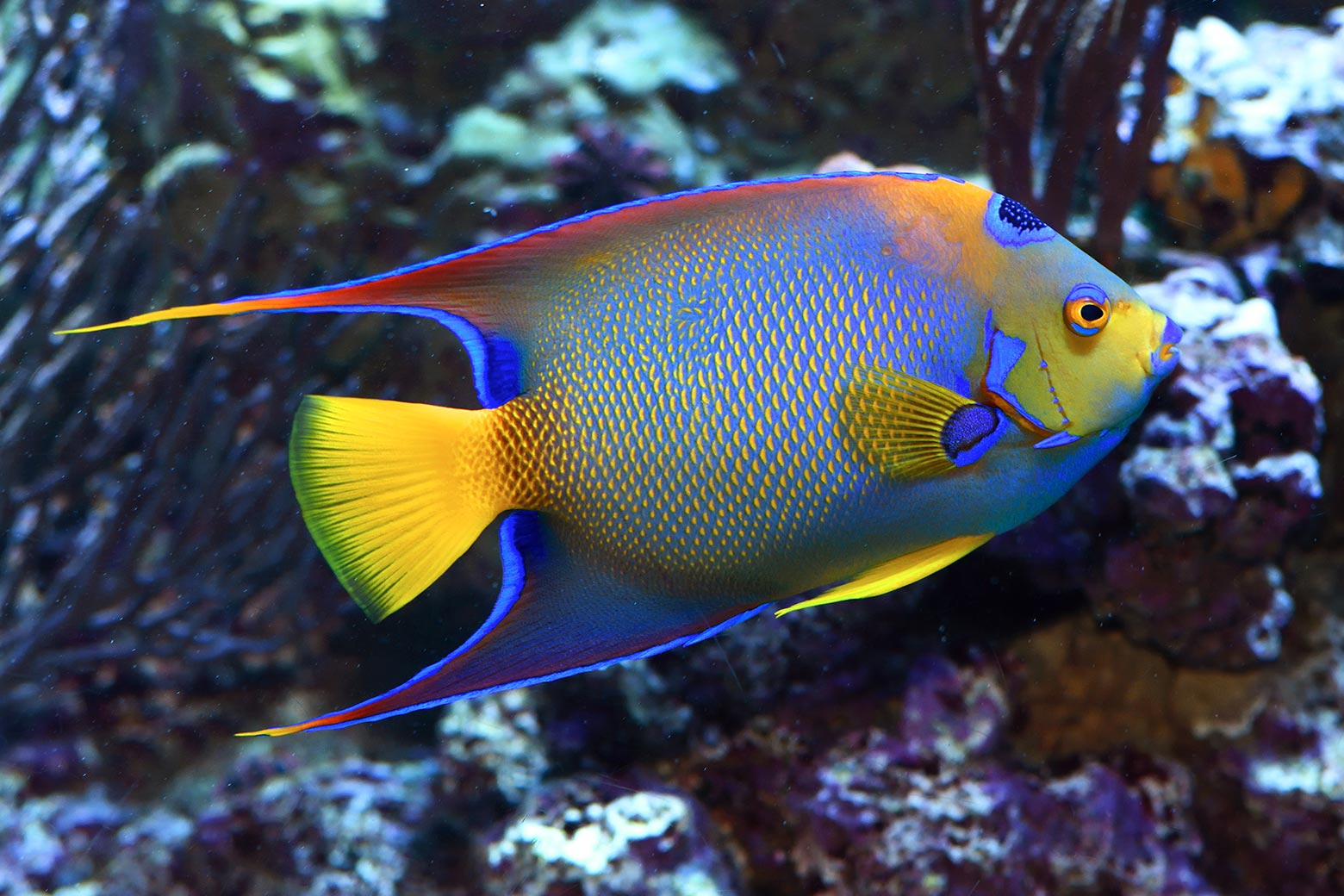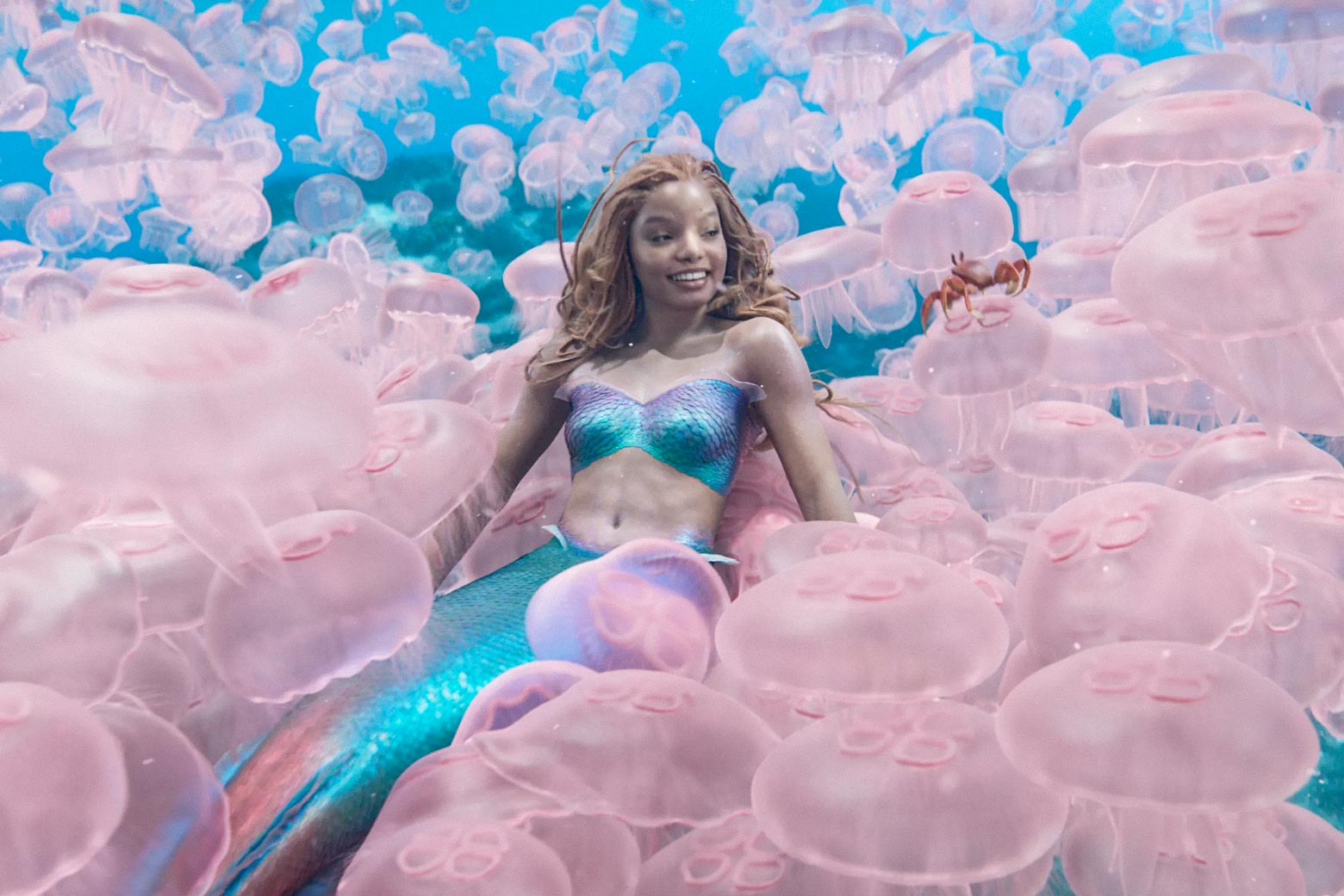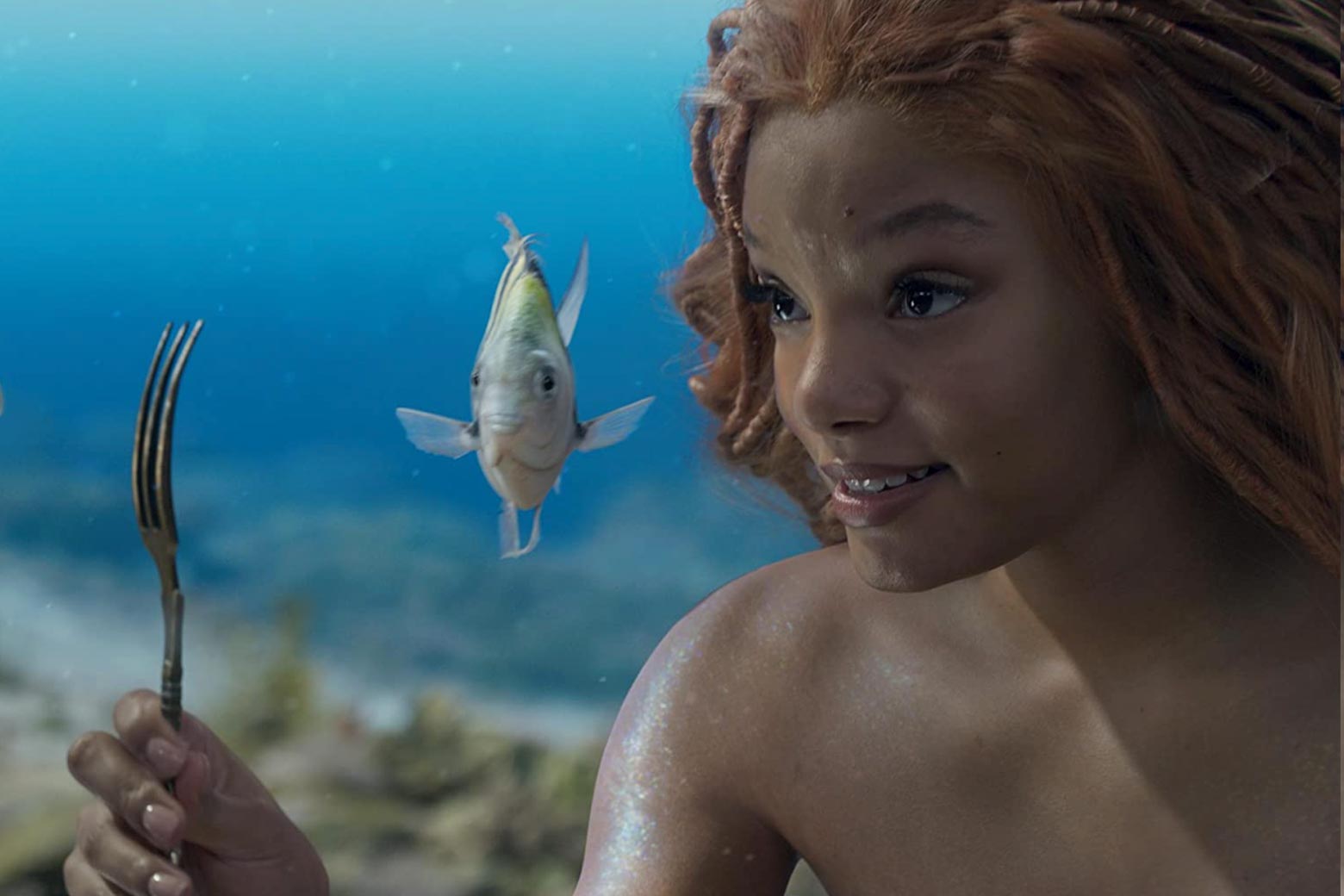The discourse surrounding Disney’s latest remake, The Little Mermaid, has long centered on the topic of representation. Of course, most of this discourse constituted just another battle in today’s culture war, specifically the decision to cast Halle Bailey, a Black actress, as the titular mer-teen. But the movie also features another type of representation that deserves consideration: fish representation.
To assess the accuracy of The Little Mermaid’s depiction of life “under the sea,” I spoke with ichthyologist Yi-Kai Tea, a postdoctoral fellow at the Australian Museum Research Institute and a research affiliate at the University of Sydney—he also goes by KaiTheFishGuy on socials, and his tweets identifying the many species of fishes swimming through the film’s trailer caught our eye. (Something else we learned: When you want to emphasize that you’re talking about multiple fish species, many ichthyologists and grammarians recommend using the plural fishes.) This interview has been edited and condensed for clarity.
Nadira Goffe: As an ichthyologist, how was your Little Mermaid viewing experience?
Yi-Kai Tea: It’s always funny because this goes beyond just fishes. Every time, every time I watch any movie that has some sort of biological component—even if they’re filming in a jungle and they say they’re in the Amazon, but the animals that are in there, they’re not from there—I’m always really interested in that kind of take, because that’s just my livelihood. But also, it’s The Little Mermaid. It’s a Disney movie. It’s not meant to be super accurate.
For me, the surprising thing was that almost every single fish—from what I could tell, anyway—and all the organisms, they’re based on real creatures. Whoever they consulted with did a really good job in terms of getting the species down correctly, down to the details of the patterns on the body, the coloration, even the size relative to Ariel, for example. It’s all fairly accurate, as far as I can tell.
So that’s a welcome surprise for you?
Oh, absolutely. It’s a great surprise. When I watched Finding Nemo, some of the fishes obviously were based on a real species, like Nemo and all the friends in the aquarium. But then, things that are in the background, the filler fishes, they’re just based on artistic renditions of what they think they might be. Whereas in The Little Mermaid, every single fish, whether it’s intended for the audience to see or if it’s just in the background, they’re all, as far as I could tell, based on real species, which was a really nice surprise for me.
Though the setting is ambiguous, there’s a handful of cultural things in the film, like steelpan drumming, that suggest that the story takes place in the Caribbean. Would you say that the mix of fish that you saw accurately represented a Caribbean marine environment? Or does the film’s marine life suggest a different setting?
One of the fishes that featured quite prominently in the movie was the queen angelfish, and that is a really beautiful fish found only in the Caribbean region. The queen angelfish is endemic to the Caribbean, and we saw a few cameo appearances in the movie. Flounder is an Atlantic sergeant major. I’m pretty sure that’s what he is.

So, Flounder is not a flounder?
He’s not a flounder. Flounders are from the order pleuronectiformes. They’re also known as flatfishes, and they live on the bottom of the sea. They’re asymmetrical, so all their organs and fins and eyes are on one side, and the other side is flat; it’s called the blind side. Flounder in the movies is not a flounder. He’s a damselfish. More specifically, he’s a sergeant major, and I’m confident in saying that he’s an Atlantic sergeant major, so that would put him in the Caribbean as well.

And at the very start of the movie, we see two tarpons, and they’re also from the Atlantic region, so you’ll find them in the Caribbean.
But aside from those fishes, everything else has just been a mishmash of things from the Indian and Pacific oceans. They’re from entirely different ocean basins. Although there are some Caribbean representatives in terms of the fishes, there’s just as many, if not more, representatives from outside of that region. So it’s really hard to say.
I love that there’s someone who knows this.
Oh my God, whenever my partner and I watch a movie together, I pause, and I’m like, “That’s not meant to be here.” And he’s just like, “Can we just watch the movie?”
How do you generally feel about the original cartoon versions of the fish vs. the new “live-action” ones? Do you like that all of these remakes are starting to go into this hyperrealistic place, or do you think that maybe they should just stick with the 2D?
It’s weird because, growing up, most of my Disney experience has been really old-school cartoon drawings. So, for me, the new trend, I would say I’m more indifferent towards it. I don’t feel strongly about one thing or the other. I know, obviously, it’s not realistic to have real lions playing in The Lion King or filming this in the ocean, so obviously there has to be a compromise. But I also want to make it really clear that I’m not at all, in any way, snobby about Ah, this fish is not real-looking. It’s not lifelike enough. It is what it is. It’s a family movie. It’s a cartoon. It’s not real life.
If you want something real, watch a documentary. This is meant to be fun. And they didn’t have to do it, but the fact that they’ve gone and made everything based on real fishes—for me, that’s a big plus. So I actually would like to commend that. For someone who doesn’t know your fishes, they’re not going to know one thing or the other. But for someone who does know fishes, it’s a nice surprise. I thought it didn’t look at all fake. If anything, a lot of it was actually pretty good, down to the way Flounder moved and swam. Even the shark scene was based on a real shark: It was a tiger shark. And especially during the “Under the Sea” scene with all the different sea creatures doing their dance, they picked so immaculately all the species that in real life would’ve moved like that.
I was really surprised and delighted to learn that the Alvin Ailey dance company helped choreograph that number. I was wondering if the group worked with an expert to actually model the choreography after real biological movement.
The undulatory movement that you see from ribbon eels, that’s actually how they move in real life. The thin flapping of the flying gurnards, that’s how they actually swim in real life. And the flatworms, when they move, they actually swim like that in real life. So it seemed very intentional. They would’ve had a biologist on their team or a marine biologist. And I’m actually really interested to know who that is or who that person advising them is because it is very well done, aside from the mishmash of different species from different ocean basins. And to be fair, that is unavoidable because you want to showcase a diverse assemblage of fishes. It’s very hard to typecast everything from one particular ocean. So, to me, that’s a very minor oversight, if you want to even call it that. But down to the way the fishes move and the choice of species they used—I also noticed crinoids and a mimic octopus—it is very informed, which is amazing.

There’s a part in “Under the Sea” where they dance among some jellyfish. Do you know what type of jellyfish those are and if they’re safe to touch?
Unfortunately, I don’t have any experience with jellyfishes. It’s a completely different phylum of animals. So, I could be wrong, but what I will say is most jellyfishes are safe to touch when it comes to the bell. The bell is the dome-shaped part of the jellyfish. I think some jellyfishes have stinging cells everywhere, but most jellyfishes only have stinging cells on the tentacles. And even then, not all the tentacles would have stinging cells. They’re quite compartmentalized and differentiated in different species. So if you see a jellyfish on the beach, you might be able to pick it up from the bell, but if you touch the tentacles, you will get stung. So there is some element of truth to that scene.
I thought they looked cute and very squishy! I would maybe get myself in some trouble there.
I think this is safe for me to say, though: My advice is to never touch anything that you’re not sure of, just to err on the side of caution.
Yes, that sounds about right. Was there any specific fish that really surprised you? Either because you’re like, “Oh my gosh, they got this right” or because you’re like, “Oh my God, they got this totally wrong.”
Yeah. In the opening scene for “Under the Sea,” before Ariel was sitting with the turtles, she lifted a rock or a coral, and then a whole cloud of really colorful fish swam out. I couldn’t tell what they were just because they were so small and they were constantly moving. But they looked to me like fairy wrasses. I did my Ph.D. dedicated towards the study of this particular group of fish. I’ve named maybe half a dozen, maybe more, new species of them. So, even just to see something that could be a fairy wrasse—not necessarily a smoking gun, but the fact that it might have been there—the ambiguity enough is exciting for me because it’s such a random niche thing. Why would anybody put a fairy wrasse in a movie like this?
The other thing that really stood out to me was that they had guppies in one of the scenes. I think it was the scene where Ariel was lying down daydreaming and twirling her fingers, and the guppies were swimming around, and her sisters were calling out for her and she wasn’t listening. Guppies are not marine fishes. They’re what you’d find in a freshwater pet store.
Right, like domestic fish.
And in the promotional poster for The Little Mermaid, there were two fishes at the bottom right corner. And one is an arapaima and one is a freshwater cichlid, and both of those are freshwater Amazonian fishes.* So they, again, don’t belong in coral reefs. It makes me wonder—because everything is done so well and so accurately, to the point of there maybe being a fairy wrasse in the movie—whoever did that had to be taking the piss. They did it on purpose. It’s a little Easter egg. They’re like, I know you’re watching; I know you’re looking at the fishes. I know you know they’re real. I’m going to put a guppy in there just to mess with you. Just as a little Easter egg for the people that really know what they’re looking at, because there’s just no way that they could get everything right, down to the actual way the fishes move, and then just throw a guppy in there. The more I stew on it, that has to be on purpose.
What’s your favorite fish depicted in the movie?
My favorite fish in the movie would probably be the queen angelfish, just because, to me, that was the smoking gun. I was trying to figure out, too, where this movie was taking place, and I had an idea that it was maybe somewhere in the Caribbean. And when I saw the queen angelfish, that was the one that sealed the deal.
There was a viral tweet questioning how Scuttle spends a lot of time underwater talking and breathing. Is it possible for a bird, any type of bird, to spend that much time underwater and breathe?
I’m not a birder in any shape or form, but there are birds that dive into the ocean to feed on fishes. Gannets and boobies do that. They don’t really spend that much time underwater, though. But things like cormorants, shearwaters—they dive into the open ocean. They plunge down through the sky, shoot into the water, and swim around with their wings for maybe a minute or two, even longer, to pick fish out of the water. So that’s actually possible. But they don’t spend that much time underwater. They definitely cannot talk or breathe underwater, and they wouldn’t be able to ruffle their feathers. They would be in and out efficiently and quickly. Again, we have to remember—especially as a biologist, I have to tell myself—“This is a cartoon. This is not real. This is not a documentary.” The fact that they’ve done so much to make it as real as possible is already amazing. I shouldn’t expect more.
There’s an ongoing discussion, especially after the recent remake of The Lion King, that they shouldn’t make these live-action films so photorealistic because the animal characters become less expressive. Did you have any thoughts on the expression of these animals, particularly the fish in this movie, and how they compare to the original?
I do definitely see where you’re coming from, especially with Sebastian, too, because in this movie he basically just had a little hole in his mouth, right? It’s hard to say, because I feel like it’s apples and oranges. It’s hard to compare because one is animation, one is hyperrealism, and it comes to a point where, yes, I do like the expressiveness of a cartoon because there’s so much going on there. Even with Ursula as well, somehow she’s just less evil and menacing, and her eels, whatever their names are, I can’t remember their names—
Flotsam and Jetsam.
Flotsam and Jetsam, yeah.
I hate that I knew that so quickly.
They’re just so much more mischievous and sinister in the cartoon version, and there is obviously that component of it being lacking in this movie. But then I think the movie makes up for it in other things.
The thing that I always tell people is “Well, you can always just go back and watch the original if you want.”
One thing doesn’t take away from the other. And I would maybe have more of an issue if they just completely scrapped the original Little Mermaid and said, “This is the new one. This is the one that everybody should be watching.” But no: This is just another option for you. If you don’t like it, then just watch the original one. No one’s stopping you from doing that.
Correction June 5, 2023: This piece originally misstated that the interviewee noted archamia and freshwater squid as freshwater Amazonian fishes. He actually said arapaima and freshwater cichlid.
